Shortly after our 9th wedding anniversary in October 2018, we started thinking about how we could celebrate our 10th anniversary. We had friends hike to Havasu Falls in the past so we looked into it and the timing was in our favor. As they share on their website, they open online reservations for the entire season at one time. Because of the rush of online traffic, this creates a lottery-style system to select dates and complete your reservation without getting kicked off. We targeted a few weeks in October and early November and were lucky enough to get a reservation around Veteran’s Day.
The true test of marriage came next – planning for our first husband/wife backpacking trip. There are many sites that talk about best practices for trip planning to Havasu Falls, so I won’t recap our overall process. However, I will share that our focus was on keeping our packs as light as possible, proper meal planning, and cold weather conditions. We expected high temperatures in the 60s with lows in the high 30s and low 40s. Friends who went a few weeks before us had lows in the 20s, so we wanted to make sure we were warm enough.
Our trip started with a long drive to a hotel in Peach Springs, AZ, about 90 minutes from the trailhead. We left the hotel the following morning around 5AM (and 32 degree weather) to get through the security checkpoint (only reservation holders and residents are allowed through) and to start hiking before the sun was up high and beating down on us. By the looks of it, we were one of the first groups to start hiking around 6:45 or 7AM. Our 10 mile hike down was smooth with a fast descent and then a relatively flat final 8 miles. It took us around 3.5 hours. Alternatively, you can have a mule carry your pack down and you can even take a helicopter, but we wanted the full experience.

As you descend, you see the transition of stone from erosion. We saw beautiful wind caves and millions of years of history within the sedimentary rock. As you get closer to Havasu Creek, plant life increases as water becomes more readily available. Trees, shrubs, and plenty of little flowers popped up and it became a lush canopy for us to walk under.




Wind caves along the hike
Once we got our permit tags, we left Supai Village and trekked the final two miles down to the Falls and campgrounds. The campgrounds were first come, first serve. They were also close quarters, with another tent usually within ten feet. Surprisingly, with the noise of the falls and creek, it created enough ambient noise that you heard nothing else when you were in your tent.
Our first day involved setting up camp, securing a picnic table and food storage bucket (because of mice and other critters), and exploring Havasu Falls and and Mooney Falls. We were grateful that we had done training hikes and other conditioning to prepare as we saw some folks with sore feet and blisters hobble into camp. With only three days for your reservation, we wanted to make sure that we took advantage of each day and didn’t have to sacrifice a day to rest our feet.
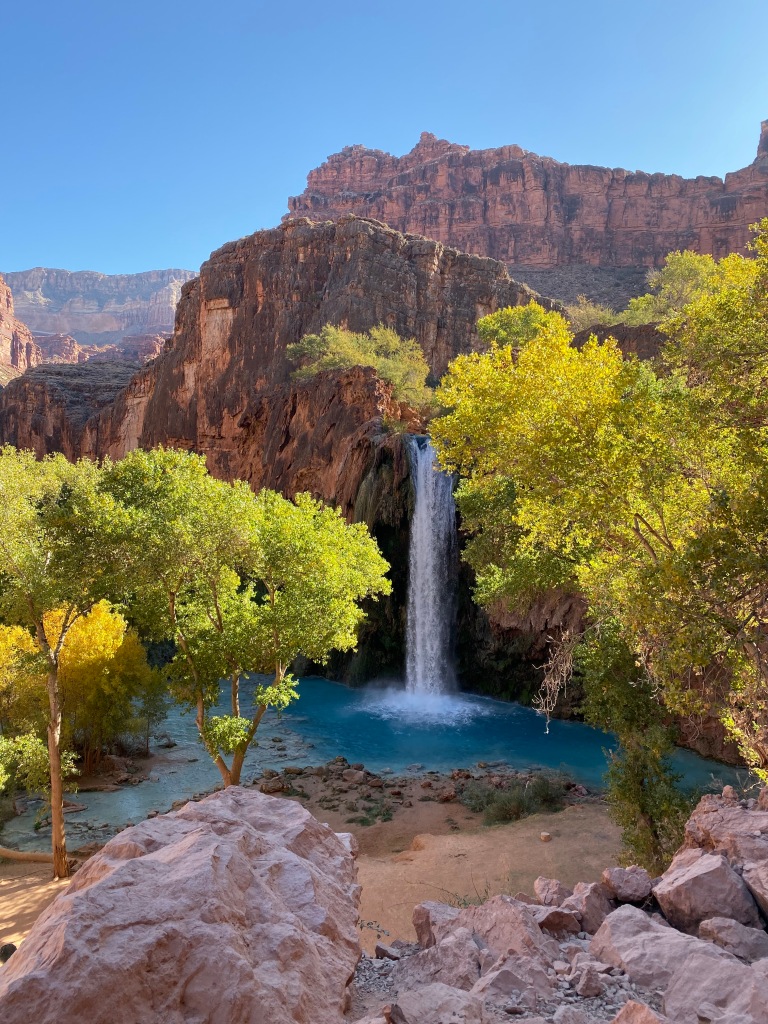


Mary under Havasu Falls 
Creekside camping 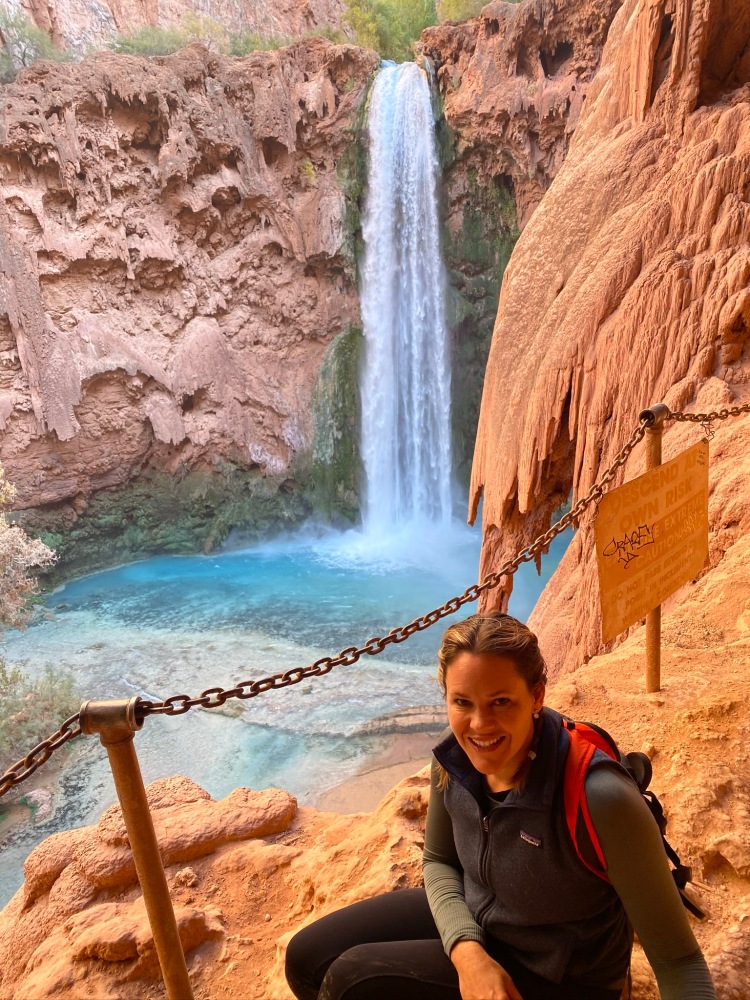
The Mooney Falls tunnels and descent
To explore around Mooney Falls, you have to climb down through a cave and down a ladder that is always wet. It creates a traffic jam as folks come and go, but it also tests people leg and grip strength for the ladder climbing.

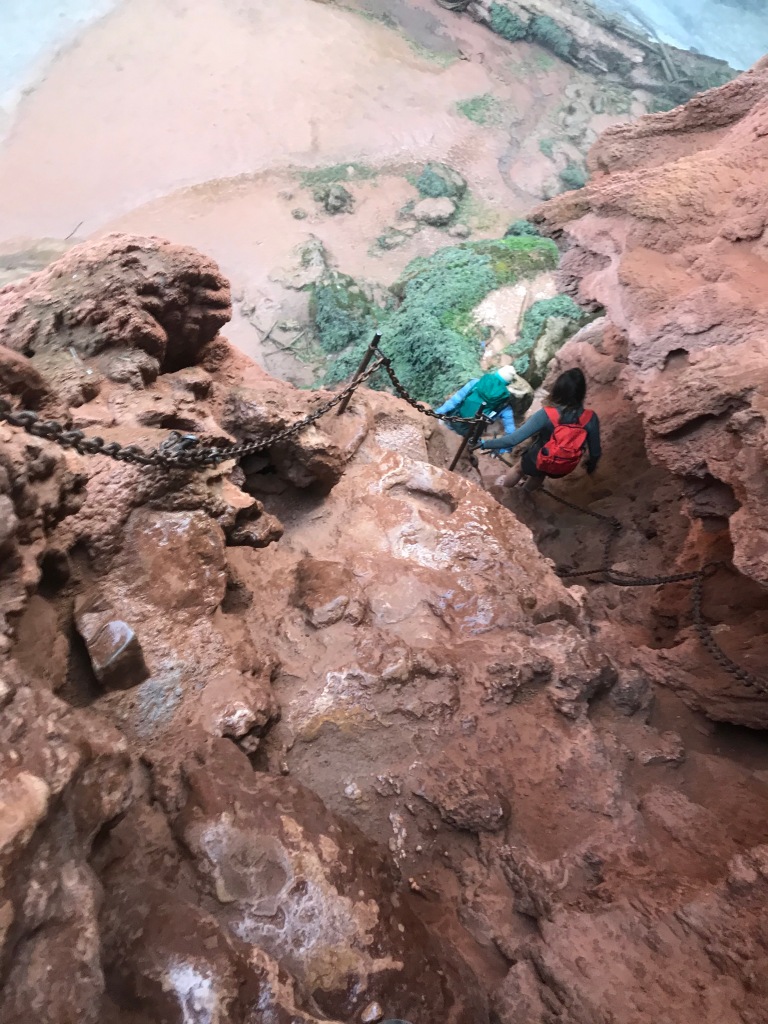

Day 2 involved our most ambitious day. We hiked from the campgrounds down to the confluence of the Colorado River. It was about 15 miles round trip and had us leave Supai tribal land and enter Grand Canyon National Park while we made our way down to the Colorado River. There were about ten water crossings in ankle to knee deep water. Being such a long hike, we only saw 15 other hikers. We also saw about seven bighorn sheep. They were really intimidating with their curved horns and used the same trails we were using, so they always got priority while we climbed into the brush to keep a safe distance. They seemed comfortable around the hikers, but we took as much caution as possible.

Looks like Jurassic Park 
One of many water crossings 
Incredible view up the canyon 
Younger Big Horn Sheep 
Bigger Big Horn Sheep 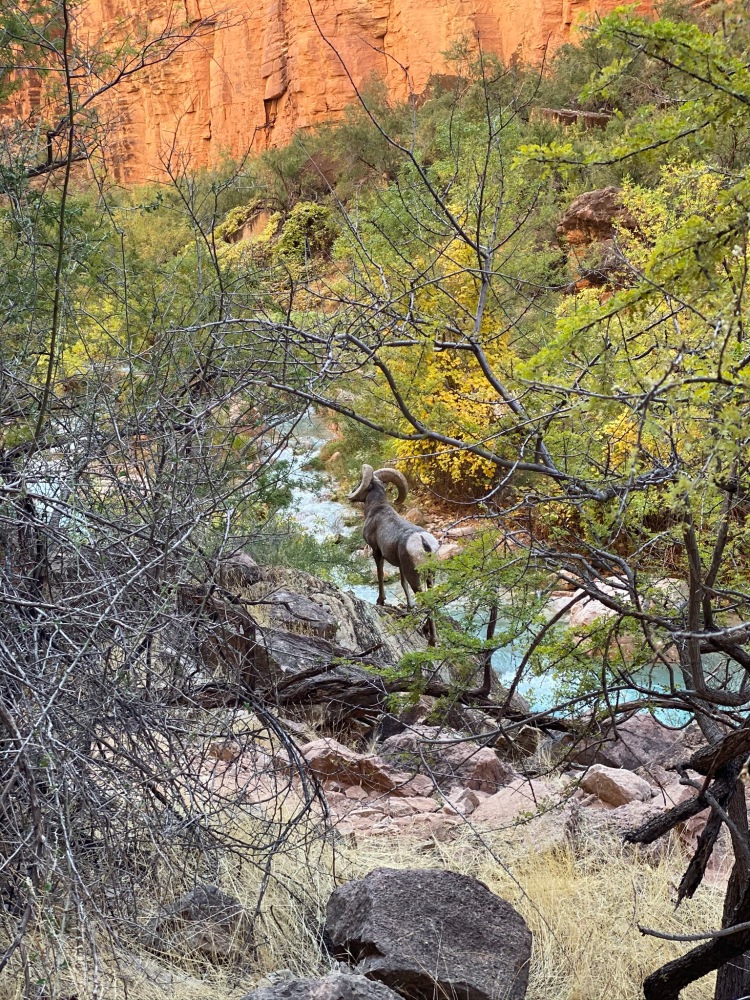
Even Bigger 
We made it to the Confluence of the Colorado River! 
Colorado River rafters
Once we reached the Colorado River, it was such a neat experience to see the blue water of Havasu Creek mix with the brown water of the Colorado River. We also saw a group of rafters taking a break. We had a quick lunch and started back up toward the campsite.
Hiking 15 miles in Tevas/hiking sandals was great for the water crossings, but ended up being a bit rough on foot support and stability. Mary got a few sore spots and what she thinks was a mild stress fracture in her foot that needed some rest and elevation. I was lucky that my feet were okay, but 40 miles hiking over 4 days took a toll.
Day 3 was another hike down the Havasu Creek to Beaver Falls. These aren’t very big falls but are an incredible collection of limestone terraces – it was a great place to explore and relax. Beaver created some great little pools and swimming spots. In the heat of the summer, I can see why it would be such a popular spot but in November, the angle of the sun doesn’t quite make the canyon hot enough and the water can feel pretty cold. Day 3 also had us stay up late for some night photography of Havasu Falls under moonlight. It was a clear night so the photos were great. It was also quiet and peaceful sitting by the falls while the moon went up.

One of the ladders to get to Beaver Falls 
Beaver Falls 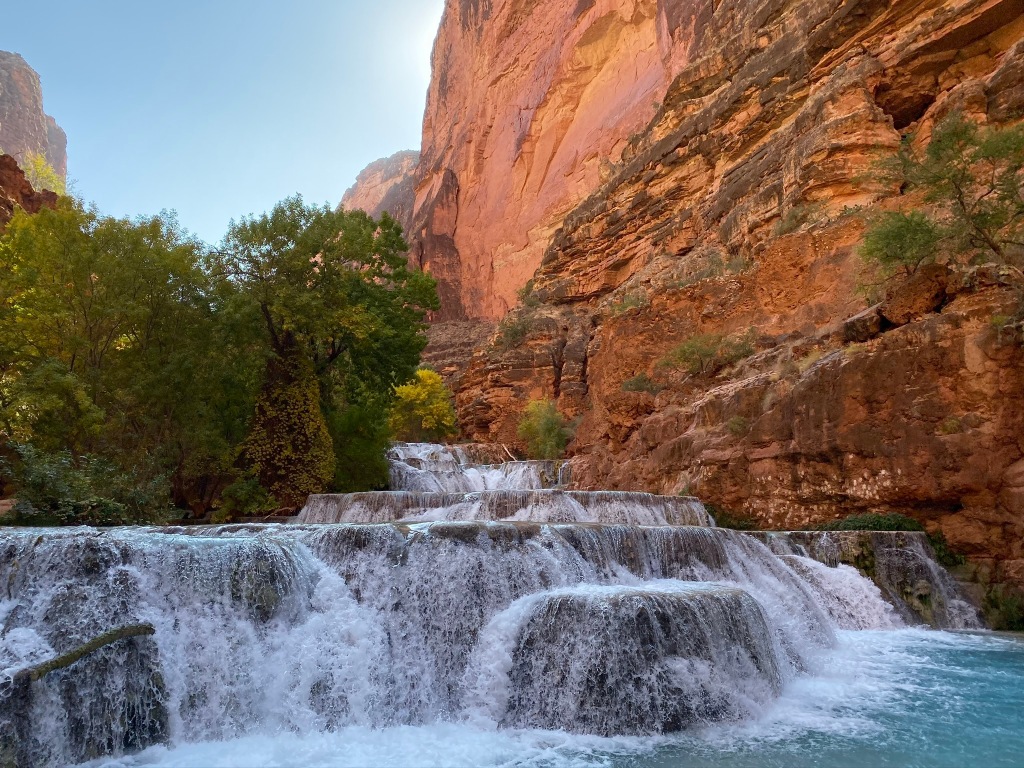
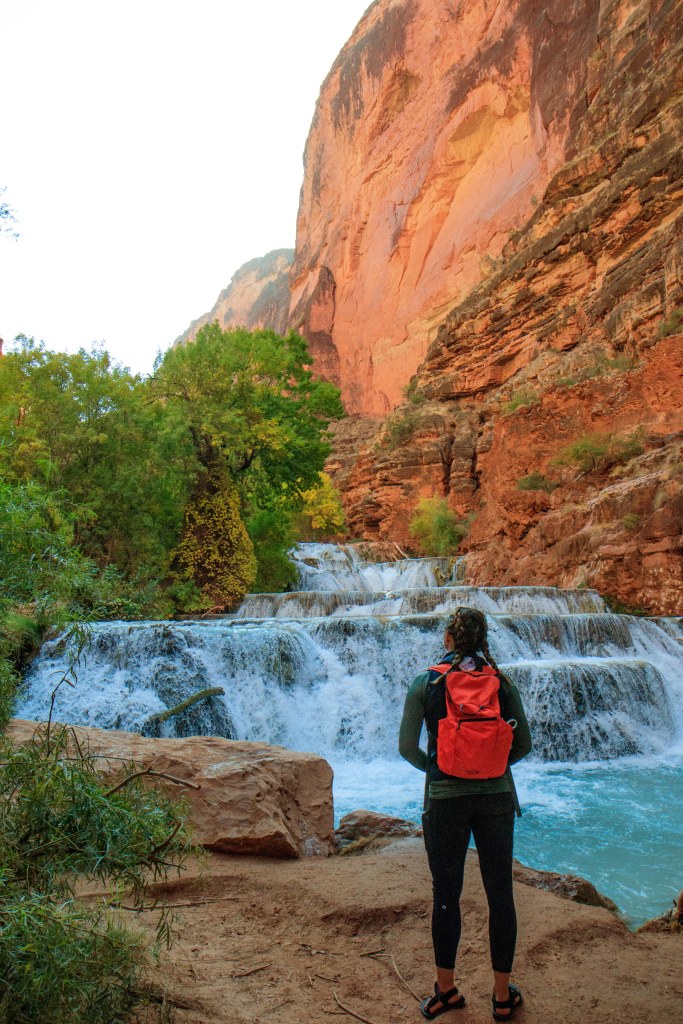

Havasu Falls at night 
Day 4 was a long one. We woke up at 4:30AM to pack up and hike out by 5AM. We snacked on breakfast along the way and made great time (we were at the top by 9AM). We were passed by a few folks we met on the Colorado River hike, so we tried to keep up with them. It probably saved us 20 minutes once we picked up the pace. The final two miles were a real challenge with the elevation gain, but it was satisfying getting to the top while others were about to start their trek down. So many questions: “Did you run out of fuel?” (No), “How long did it take you to hike down?” (3.5 hours), “Did you filter water?” (Yes), “What were the toilets like?” (Fine).

40 miles in 4 days.
The trip was completed with a long drive from the trailhead back to Encinitas with a huge lunch at Five Guys. Overall, Havasu Falls is an incredible place with beautiful azure waterfalls and a gorgeous canyon landscape. I can see why it is special land for the Supai tribe. Almost all hikers were respectful and supportive of their fellow hikers. A few weren’t following Leave No Trace principles leaving trash along the trail or near their site.
The wildest part came a few weeks later when we saw a news story about a harsh flash flood that came through the canyon and flooded out much of the campground. There were no major injuries, but the beautiful blue water was brown for a few days. The full article is here.


Hey guys, Looks like another great adventure and the pictures were awesome! Great way to stay in shape. Hope you are all doing well and staying safe during these unpredictable times.
Love you all, Uncle Tony and Aunt Geri
LikeLike
Wonderful pictures. Glad you were able to do such a spectacular trip while young. What a marvelous experience. We really do live in a fantastic country! Absolutely the most amazing rock formations and views to see first hand. Hope your feet have recovered! Stay safe, give girls a big hug for us. Stay well. Love ❤️ ya all.
LikeLike
Beautiful picture
LikeLike